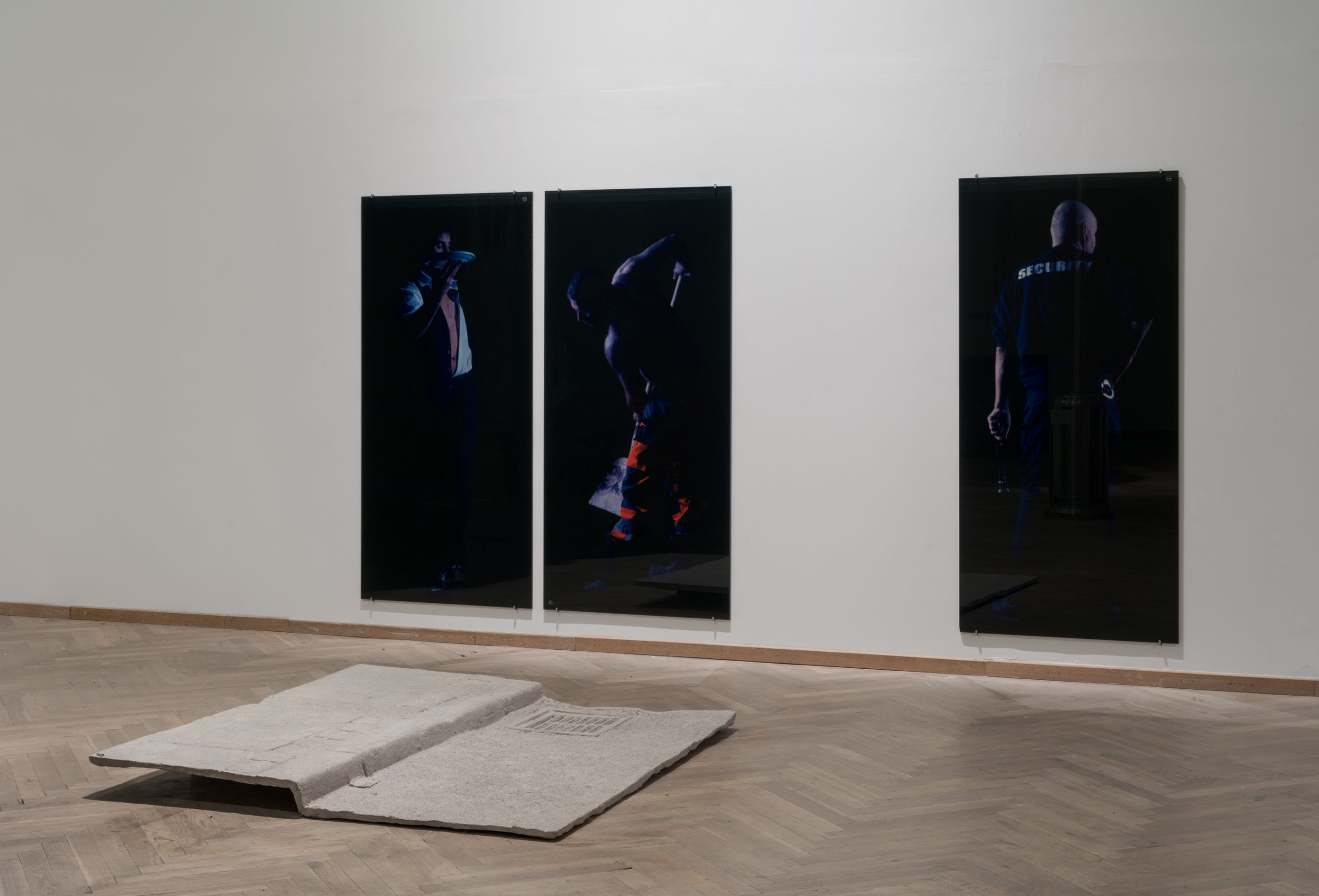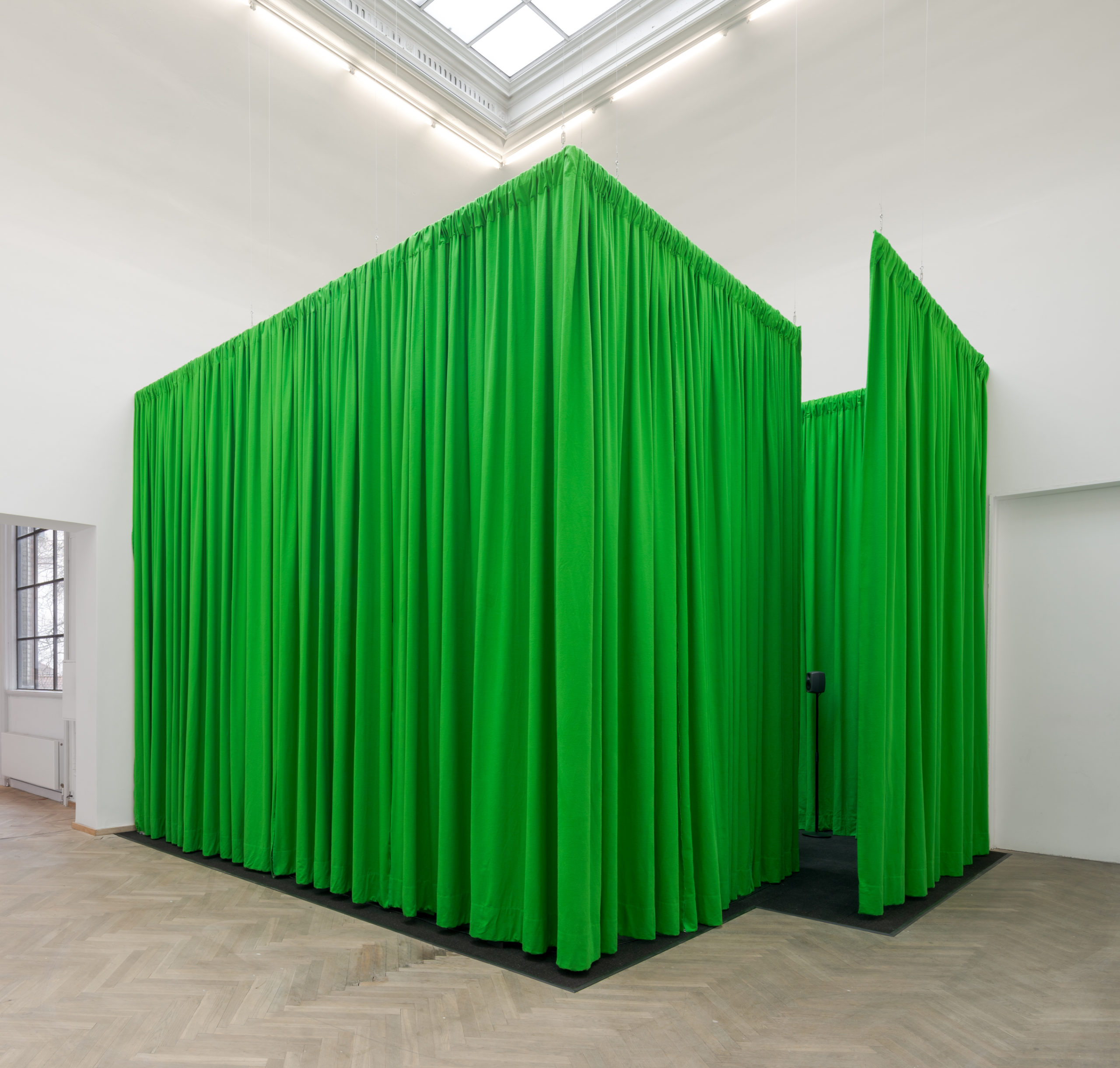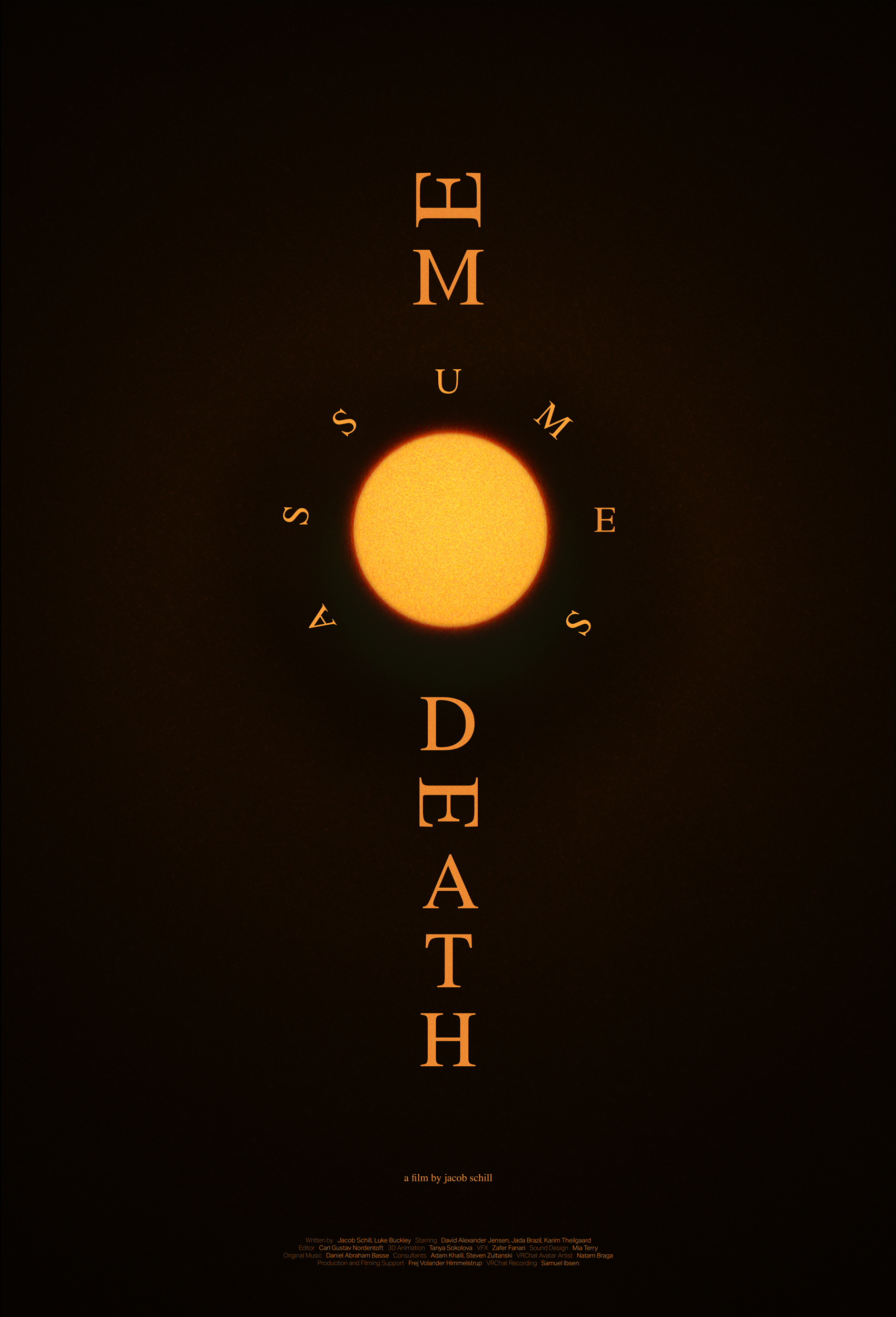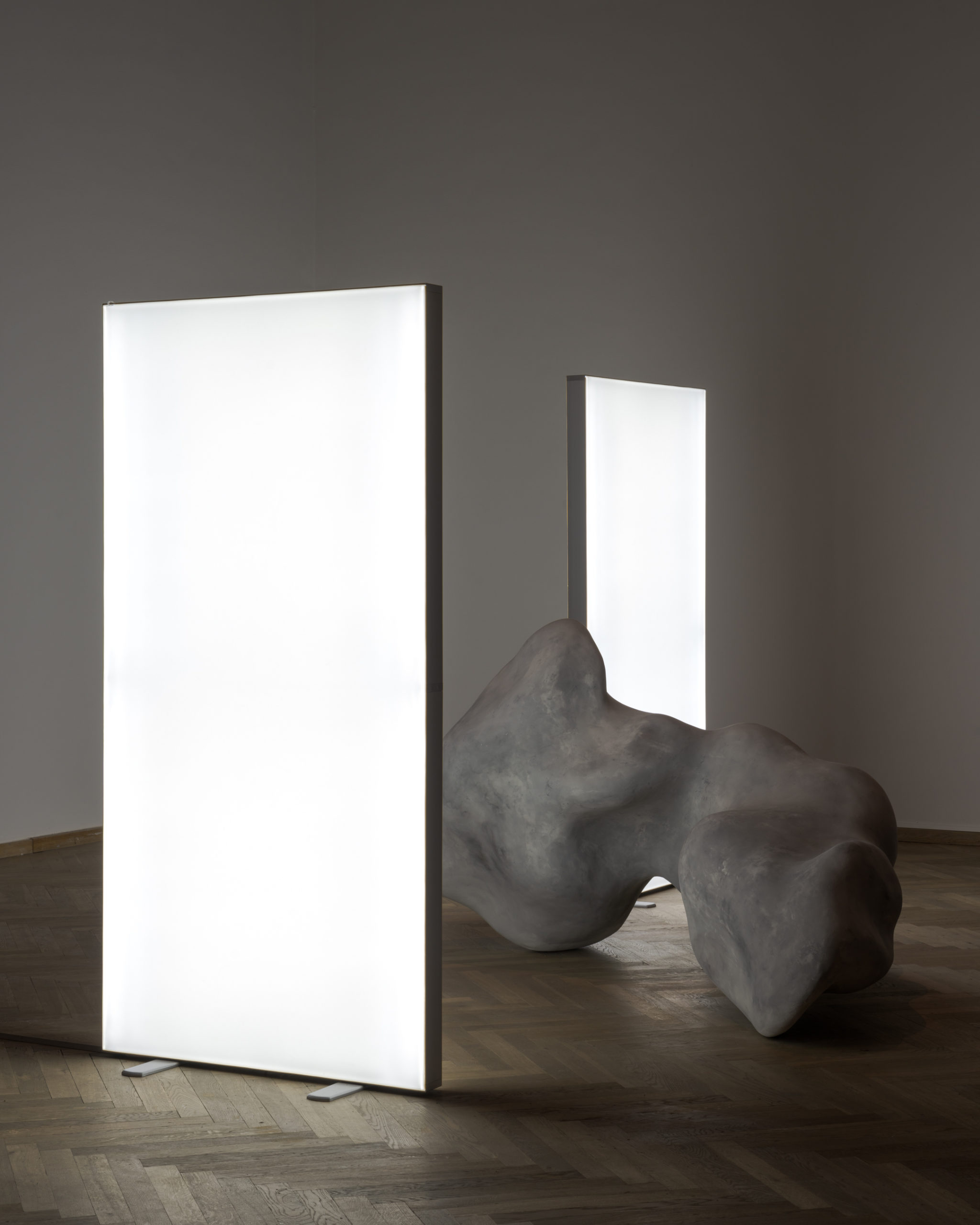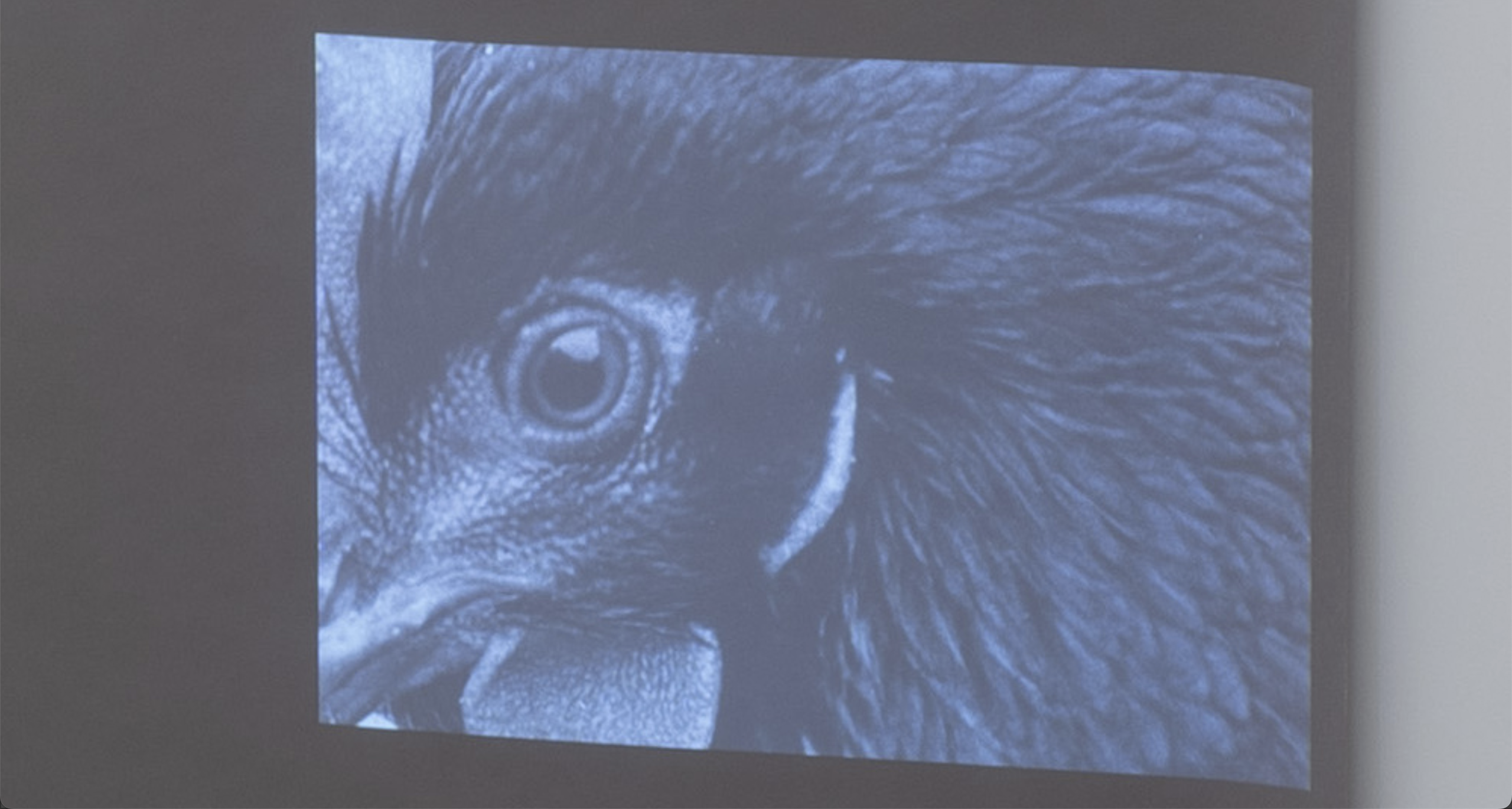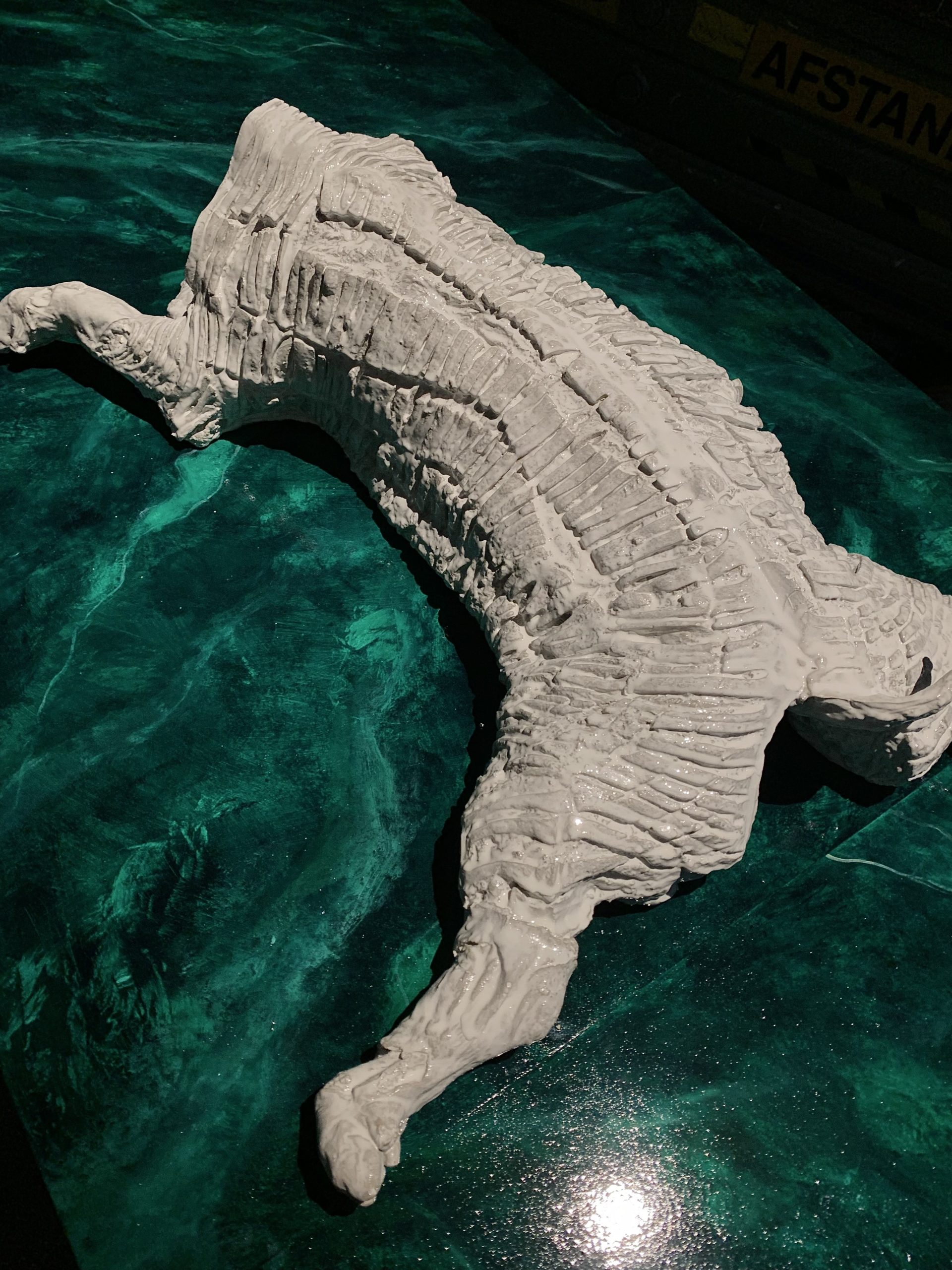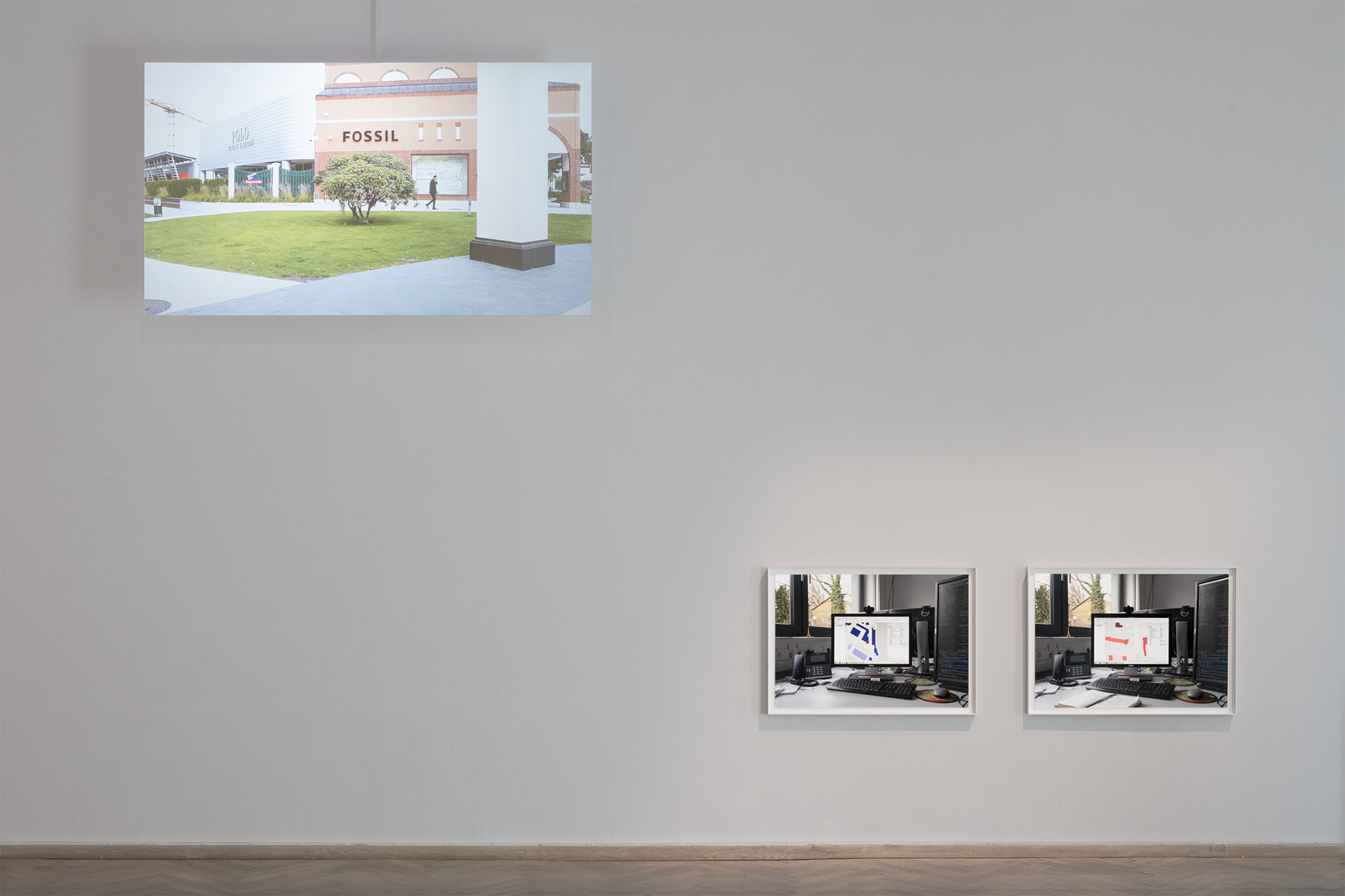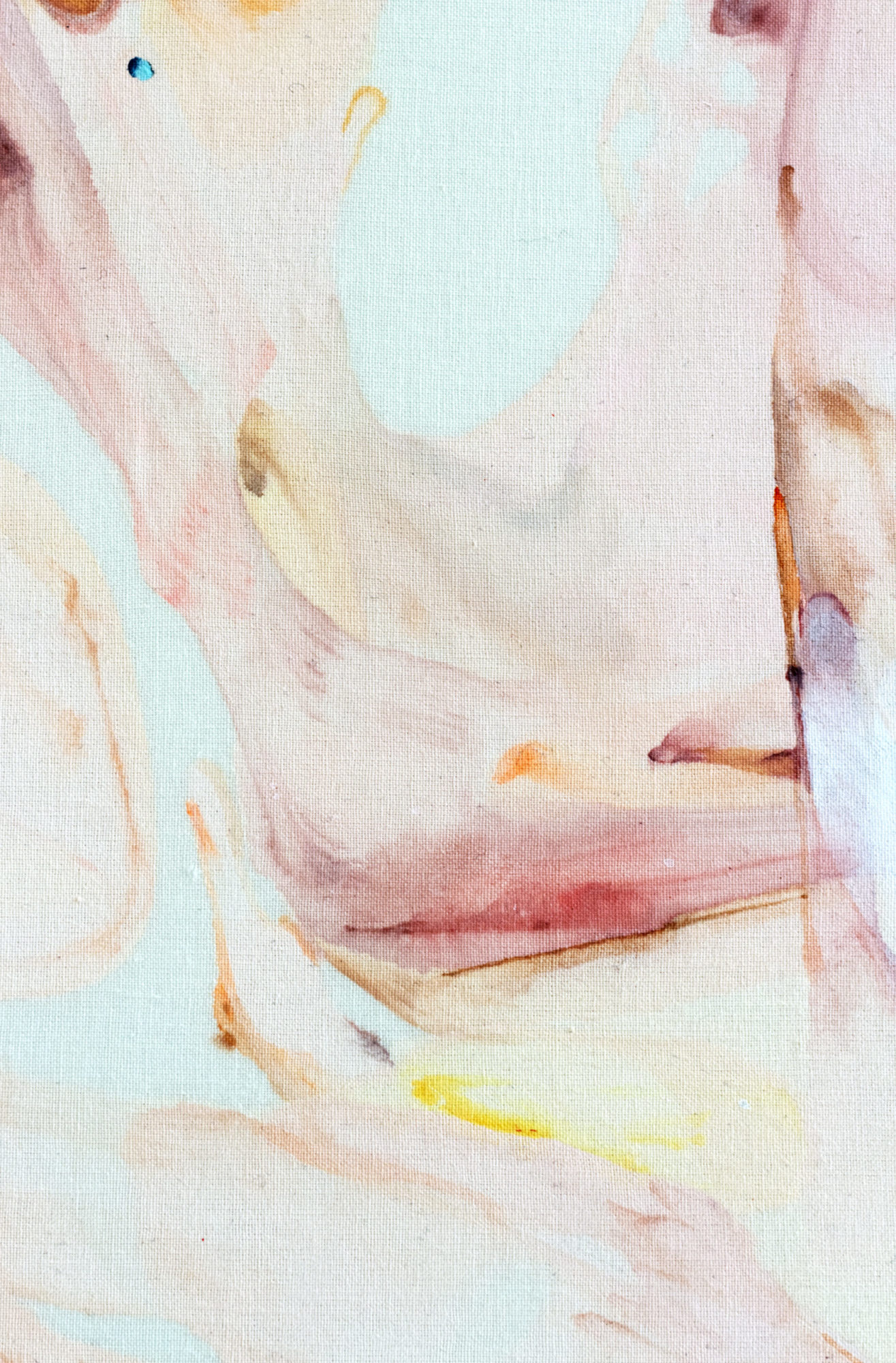

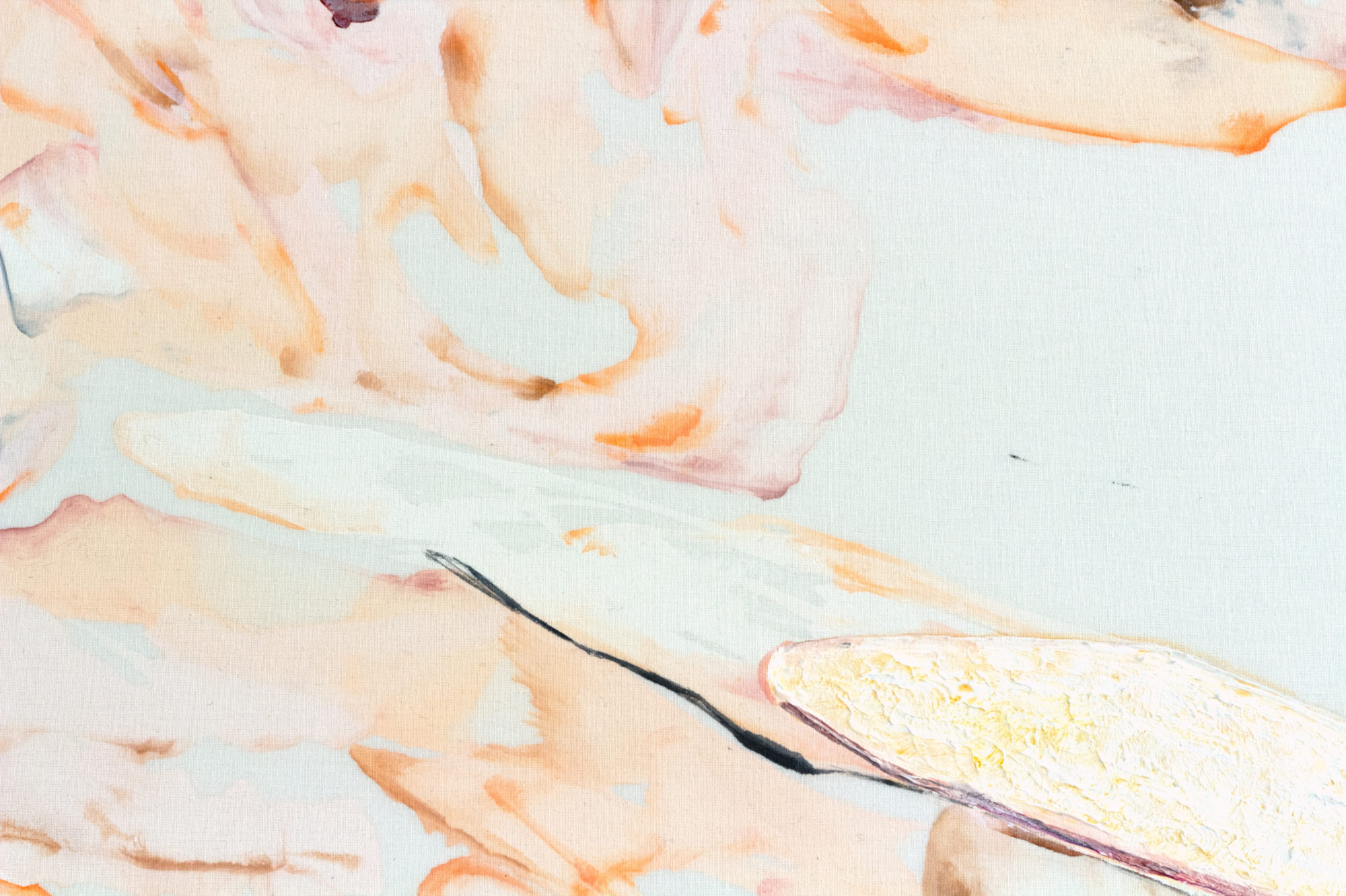
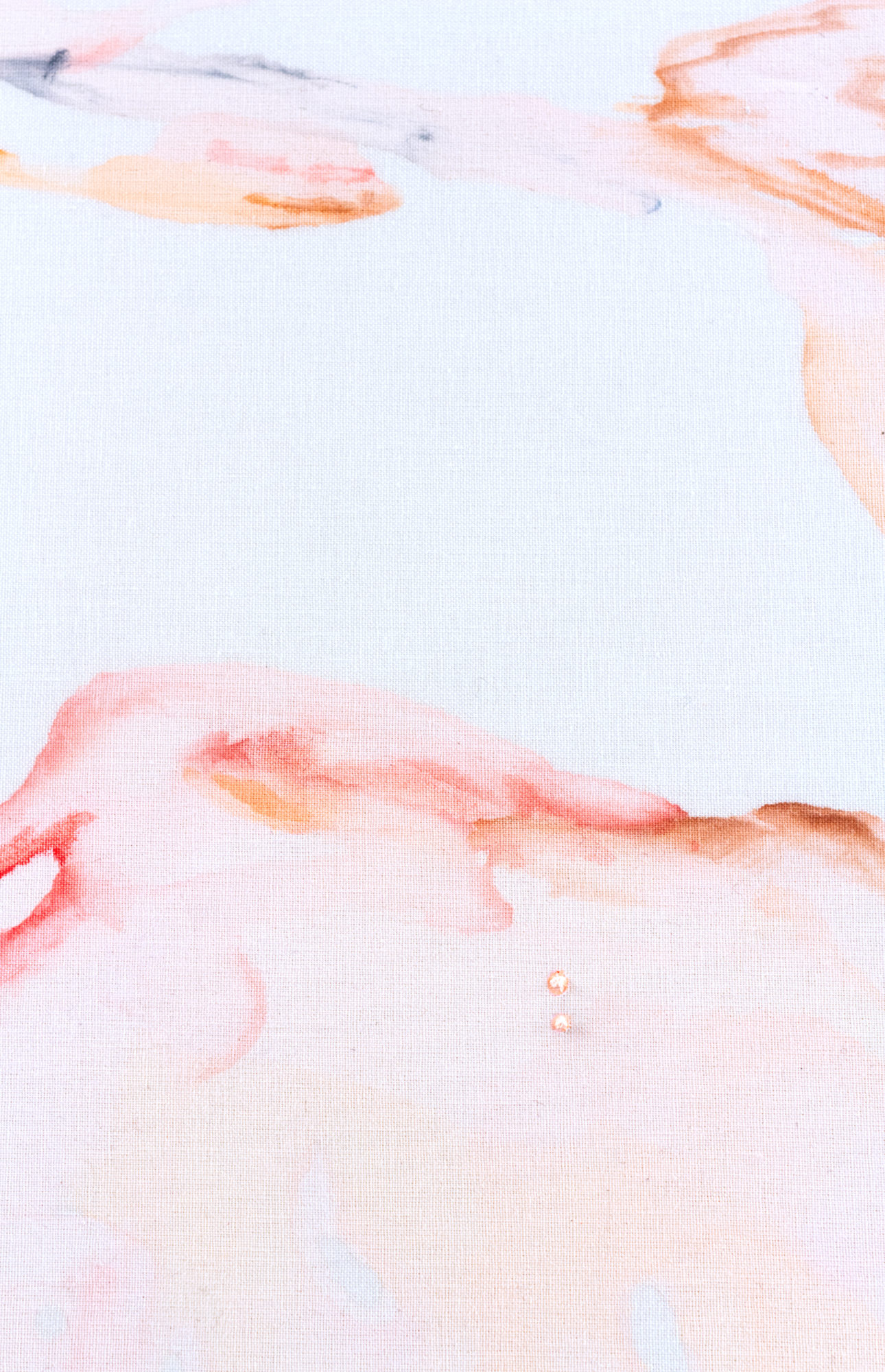


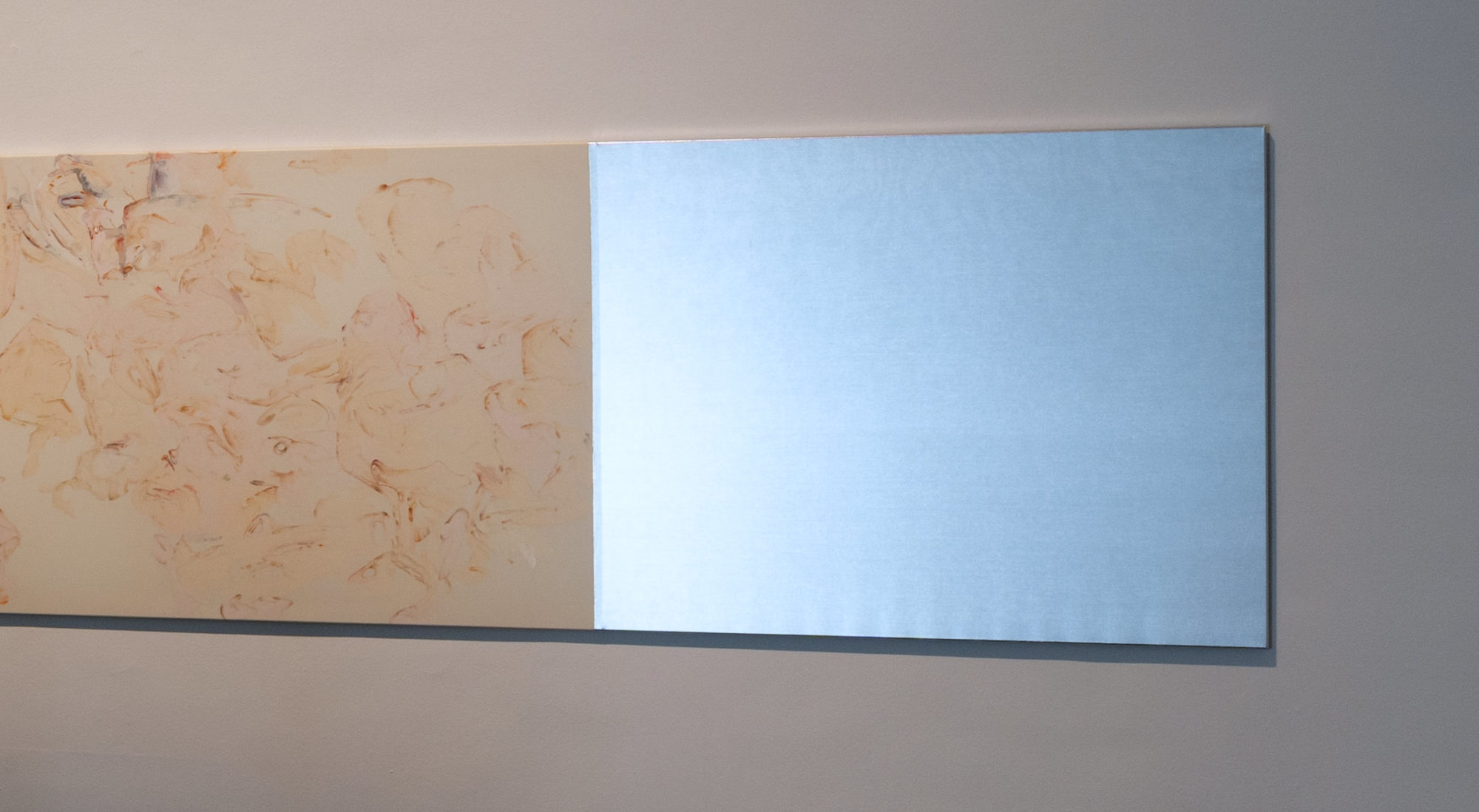
Wenjie Zhou has a methodical, experimental, and reflective approach to painting. Often using thin unprimed semi-transparent textiles, her works involve a protracted process of progressively staining and subtly amending the surface with lyrical gestures that invoke calligraphy or natural topographical and biological forms, while remaining patently abstract. The central force of her practice is a curiosity with the motion of being and the physical and symbolic properties of water. Through a teasing of chance and control, spontaneity and intention, push and pull, she generates compositions of liquid material in a perpetual state of becoming, synthesizing creation and dissolution to produce a kinaesthetic field of reactions and relations.
The resulting images catalyze processes of apophenia for the viewer, an attempt to discern order and familiarity in a chaotic flux. Zhou’s 〝A thousand mountains in a speck of dust. Breathing through grotto-heavens.〞 is an epic 8 meter painting that recalls a long scroll, a scenographic backdrop, and grand traditions of history and landscape painting. Exploring how painting is able to continuously open portals to new worlds and modes of being (despite and because of its historical burdens), this work draws especially on the tradition of shan shui (mountain-water) painting, an ancient yet continuing practice of depicting the landscape with washes of ink that is viewed as a philosophical object, a vehicle for the mind of the viewer akin to poetry. One of the archetypical subjects in this tradition is the depiction of Grotto-heavens (‘dong tian 洞天’. The word ‘dong 洞’ literally means cavern or torrent. It also means ‘to penetrate’, both physically and intellectually, often used interchangeably with its near homophone ‘通’, meaning to communicate. Finally it means empty, undifferentiated and formless) known to be Daoist ritual sites and channels of spiritual communion in the form of a nexus of interconnected caves. Beneath and within mountains, those subterranean heavens are inhabited by divine beings, yet not inaccessible to humans. They are places of passage between worlds where night is turned into day, inside becomes outside, and the body marks out the space and time of different universes.
Here, craggy forms suggest mountainous terrain through a counter-intuitive narrative of thinness and porosity, yet the orange and pinkish palette of the image creates an almost bodily intimacy. ‘Emptiness’ is orchestrated and choreographed, formally organized along with the marks. The untreated white ground itself becomes a part of the motif, emerging and intertwining with the tinted paint. The ancient Shanshui painters conceived that breath, brush, and ink are in a three way sexualized relationship with breath being the element that connects the other two. Every bit as alive as the body that can breathe, painting is a gesture of enacting life forces, movements, and relations. Here, the painter’s body is turned inside out, with parts and bits floating together with all others, becoming an integrated breathing landscape. By staging an interchange between the imposing all-over composition and her delicate mark making, Zhou conflates micro and macro, and explores the possibility of the infinitude and interconnection of all things and beings contained within a speck of dust. This observation of the macrocosm in the microcosm and the microcosm in the macrocosm is both profound and empirical: we float on a grain of sand in the cosmos, and within it are a thousand mountains and everything else we regard as important. Zhou’s painting is a meditation on to love and to be loved – a form of mutual accommodation in cosmic regeneration. It is a long panorama where feelings, thoughts and considerations happen on the paint surface in both chronological order and as a continuous present, looping, returning, self-reflecting.
text by Post Brothers, Wenjie Zhou

